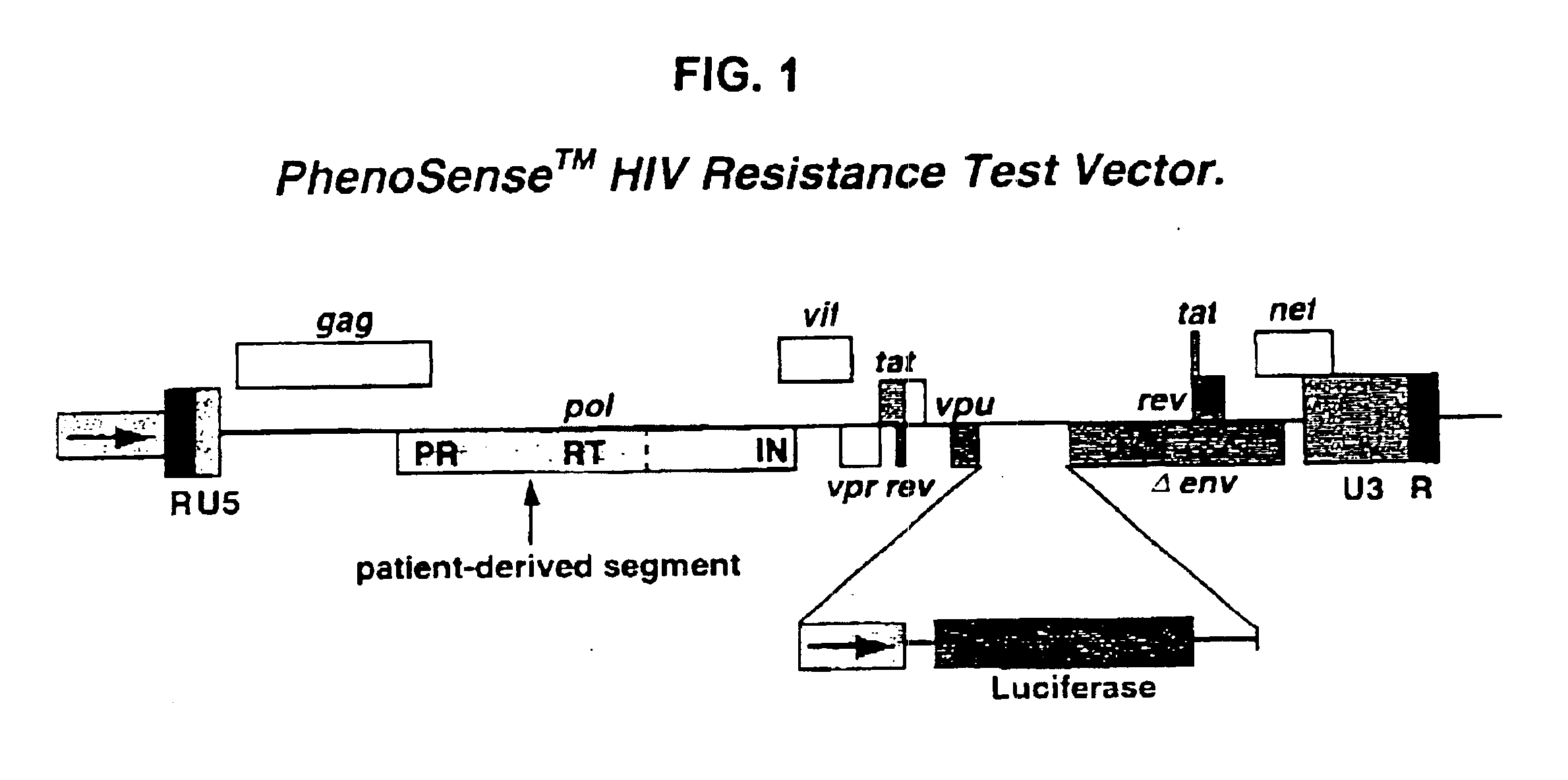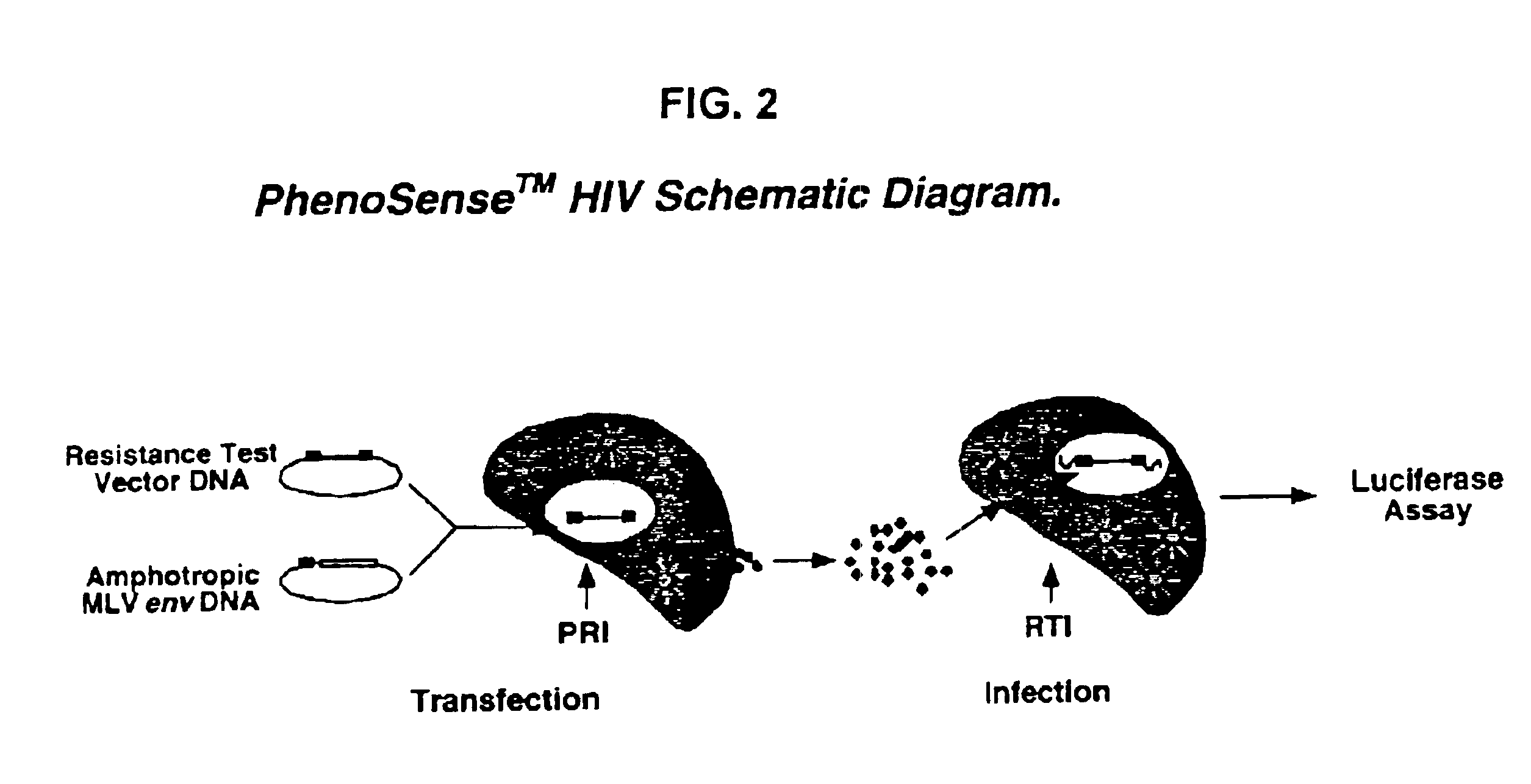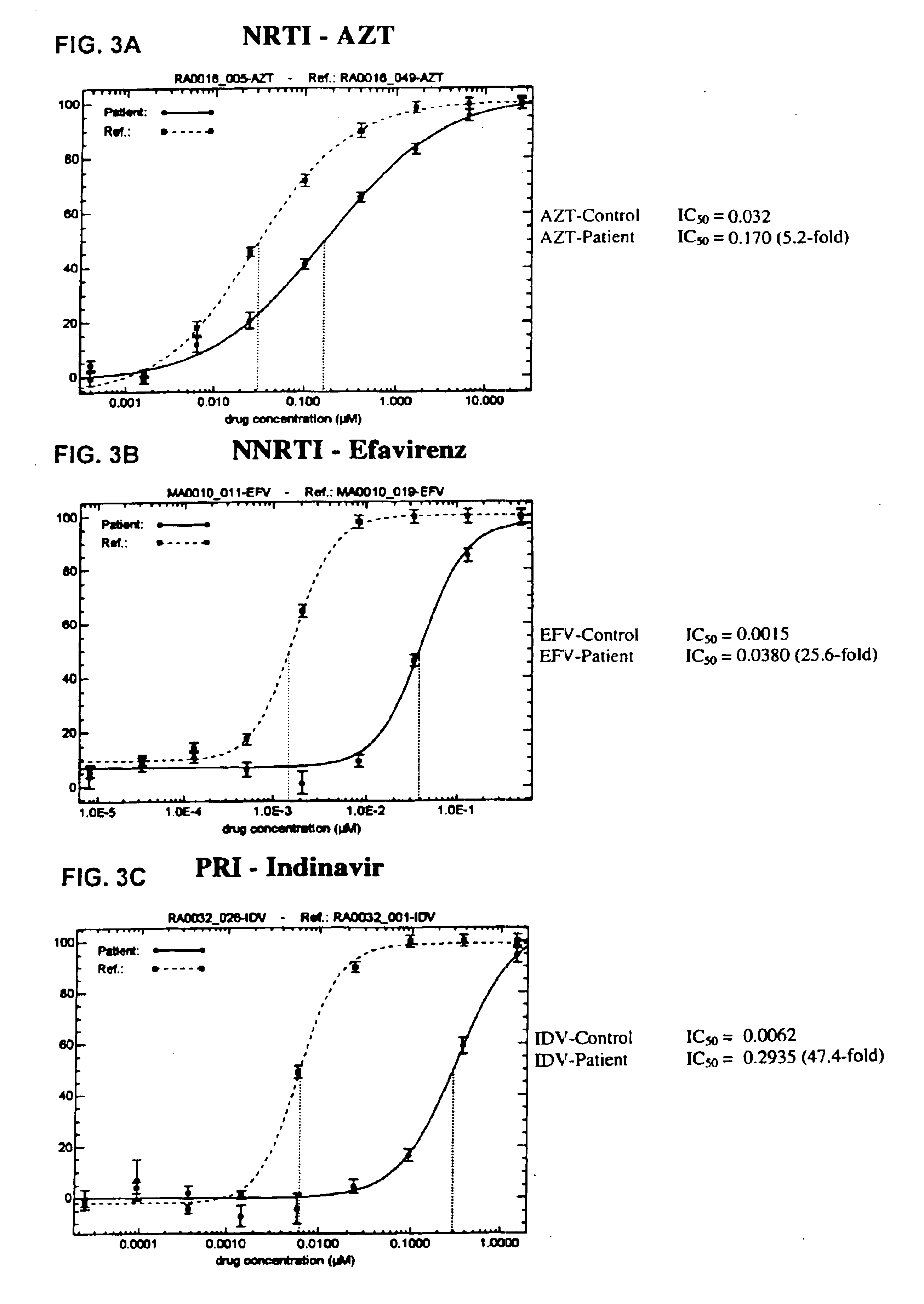Means and methods for monitoring protease inhibitor antiretroviral therapy and guiding therapeutic decisions in the treatment of HIV/AIDS
a protease inhibitor and antiretroviral therapy technology, applied in the field of antiretroviral drug susceptibility and resistance tests, can solve the problems of small proportion of the total viral load, low tolerability of drug regimens, and inability to detect the fitness of a virus infecting, etc., to achieve the effect of identifying and assessing the fitness of a virus
- Summary
- Abstract
- Description
- Claims
- Application Information
AI Technical Summary
Benefits of technology
Problems solved by technology
Method used
Image
Examples
second embodiment
2. Permuted Coding Region In a second embodiment, an indicator gene is rendered non-functional due to the relative location of the 5′ and 3′ coding regions of the indicator gene, in that, the 3′ coding region precedes rather than follows the 5′ coding region. This misplaced coding region is referred to as a “permuted coding region.” The orientation of the non-functional indicator gene may be the same or opposite to that of the native or foreign promoter / enhancer of the viral vector, as mRNA coding for a functional indicator gene will be produced in the event of either orientation. The non-functional indicator gene and its permuted coding region is rendered functional by the action of one or more of the patient-derived segment products. A second example of a non-functional indicator gene with a permuted coding region in the case of HIV, places a 5′ indicator gene coding region with an associated promoter in the 3′ LTR U3 region and a 3′ indicator gene coding region in an upstream loc...
third embodiment
3. Inverted Intron In a third embodiment, the indicator gene is rendered non-functional through use of an “inverted intron,” i.e. an intron inserted into the coding sequence of the indicator gene with a transcriptional orientation opposite to that of the indicator gene. The overall transcriptional orientation of the indicator gene cassette including its own, linked promoter, is opposite to that of the viral control elements, while the orientation of the artificial intron is the same as the viral control elements. Transcription of the indicator gene by its own linked promoter does not lead to the production of functional transcripts as the inverted intron cannot be spliced in this orientation. Transcription of the indicator gene by the viral control elements does, however, lead to the removal of the inverted intron by RNA splicing, although the indicator gene is still not functionally expressed as the resulting transcript has an antisense orientation. Following the reverse transcript...
example 1
Phonotypic Drug Susceptibility and Resistance Test Using Resistance Test Vectors
Phenotypic drug susceptibility and resistance tests are carried out using the means and methods described in U.S. Pat. No. 5,837,464 (International Publication Number Wo 97 / 27319) which is hereby incorporated by reference.
In these experiments patient-derived segment(s) corresponding to the HIV protease and reverse transcriptase coding regions were either patient-derived segments amplified by the reverse transcription-polymerase chain reaction method (RT-PCR) using viral RNA isolated from viral particles present in the serum of HIV-infected individuals or were mutants of wild type HIV-1 made by site directed mutagenesis of a parental clone of resistance test vector DNA. Isolation of viral RNA was performed using standard procedures (e.g. RNAgents Total RNA Isolation System, Promega, Madison Wis. or RNAzol, Tel-Test, Friendswood, Tex.). The RT-PCR protocol was divided into two steps. A retroviral reverse t...
PUM
| Property | Measurement | Unit |
|---|---|---|
| Volume | aaaaa | aaaaa |
| Fraction | aaaaa | aaaaa |
| Fraction | aaaaa | aaaaa |
Abstract
Description
Claims
Application Information
 Login to View More
Login to View More - R&D
- Intellectual Property
- Life Sciences
- Materials
- Tech Scout
- Unparalleled Data Quality
- Higher Quality Content
- 60% Fewer Hallucinations
Browse by: Latest US Patents, China's latest patents, Technical Efficacy Thesaurus, Application Domain, Technology Topic, Popular Technical Reports.
© 2025 PatSnap. All rights reserved.Legal|Privacy policy|Modern Slavery Act Transparency Statement|Sitemap|About US| Contact US: help@patsnap.com



